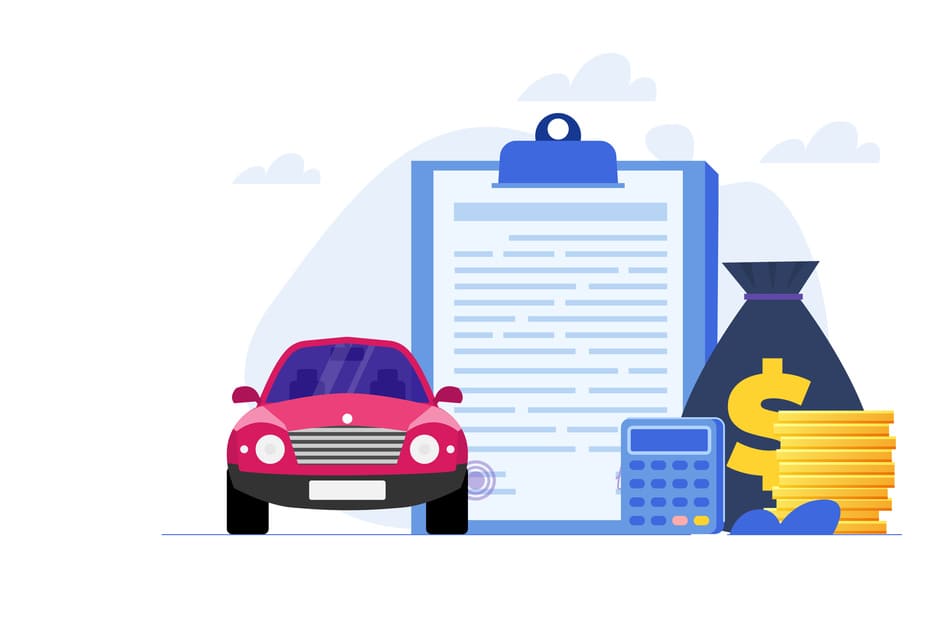Tips to Secure the Best Deals for Car Loans Online

Car loans are one of, if not, the most common ways Americans buy their rides. According to the Federal Reserve, the total value of car loans securitized is shy of USD$1.6 trillion as of Q3 2023. Despite recessions throughout the decades, this figure has largely kept its upward trend.
That said, loans, in general, are double-edged swords. They let you immediately purchase any big-ticket item you want, but many borrowers struggle with paying them back due to interest rates. In another report, the Federal Reserve states that 30-day delinquency rates (falling behind loan dues for more than a month) per quarter have increased from 2.02% in Q3 2022 to 2.53% in Q3 2023.
Nevertheless, car loans won’t fall out of favor anytime soon for the reasons stated above. If you plan to purchase your dream vehicle this way, getting the best possible deal will be the name of the game.

Here are several ways to get the right car loan for your buck online
1. Check your credit first
Loans, whether for a house or car, begin with the lender delving deep into the borrower’s credit profile. As the former will be giving away a hefty sum, it’s only reasonable for them to confirm the latter’s ability to pay every cent back. The primary credential for this will be the credit report.
A credit report is a document that outlines vital information for lenders and financial institutions, namely the person’s transaction history and credit score. The scoring system ranges from 350 to 800; the higher the rating, the more creditworthy the individual.
Some lenders may refuse to offer car loans to people with bad credit outright, but many may do so, albeit with less favorable terms. However, you’d be surprised that credit reports are prone to errors that can deny you the best loans. In 2022, credit reporting disputes accounted for 75% of all complaints to the Consumer Financial Protection Bureau (CFPB).
Because of this, checking your credit profile for errors is always a good idea. Under federal law, you can receive reports free of charge from the three major reporting bureaus: Equifax, Experian, and TransUnion. If you believe a mistake hinders you from securing the best car loan deals, you can dispute it with them. If nothing has changed after that, you can escalate it to the CFPB.
2. Find an all-encompassing lender
While most Americans have credit, a small fraction is so-called “credit invisible.” These people have no credit history to show lenders for one or several reasons. The result is a Catch-22: they can’t prove their creditworthiness, which can only be done by taking out loans. Experts believe being credit invisible or “non-prime” is worse than subprime or with bad credit.
The good news is that the market has some lenders allowing people to apply for car loans online under such circumstances. This requires a few extra steps compared to the standard process, such as getting a qualified cosigner or applying to be an authorized user of a credit card account. They can also entertain individuals with bankruptcies on their records.
Then again, credit invisibility may soon become a thing of the past. In 2022, Experian launched an app that aids non-prime borrowers in building their credit profile by reporting bill payments and other eligible expenses through its other services or conventional avenues. Some third-party apps in the market perform similar functions.
3. Commit to a larger down (if possible)
Auto purchases are twofold. The first involves making an upfront downpayment. The second entails settling the remainder monthly over a prescribed period, typically two to seven years. More on the second one in a while.
While there’s no law prescribing how much down to make when purchasing a car, most experts agree that 20% for new vehicles and 10% for used ones are good rules of thumb. But these rates might not be viable for cash-strapped buyers, prompting them to make lesser downs at the cost of higher periodic dues and interest.
Smaller downs also risk going “underwater” on the loan, also known as negative equity. Because most new vehicles can depreciate up to 20% in their first year, owners might end up paying more than their market value. It may not be a problem upon purchase, but accidents and other mishaps can quickly tank its value, leading to negative equity.
On the other hand, larger downs mitigate such risks and even set borrowers up for better car loan deals. Aside from starting with a larger equity buffer, it also means less money to borrow—and that’s music to lenders’ ears.
4. Avoid longer-term loans (if you can)
It’s easy to think that going for longer-term loans is the better option because the dues are spread over a lengthier period. However, this only makes fiscal sense in two scenarios: when you qualify for a really low-interest rate and when you can’t put off your need for a car any longer.
Outside of these, experts advise against preferring car loans that last six years or longer, the most common reason being more time for interest to linger. You may save hundreds in dues but spend thousands in interest payments. On top of that, long-term loans tend to have higher rates because the timeframe increases the risk of defaulting.
Depending on how often you drive, such loans can also trap borrowers into spending for repairs and maintenance on top of their interest struggles. This should be a key consideration if planning to buy used vehicles, as fixes become more frequent and expensive the older they get. When the car’s value depreciates enough, even trading in might not be enough to repay the loan.
Conclusion
Amid the abundance of horror stories on the Internet, car loans will likely remain an often-taken road to car ownership. To avoid inconveniences and financial troubles, never settle for nothing short of the best deals online.

Pranab Bhandari is an Editor of the Financial Blog “Financebuzz”. Apart from writing informative financial articles for his blog, he is a regular contributor to many national and international publications namely Tweak Your Biz, Growth Rocks ETC.






